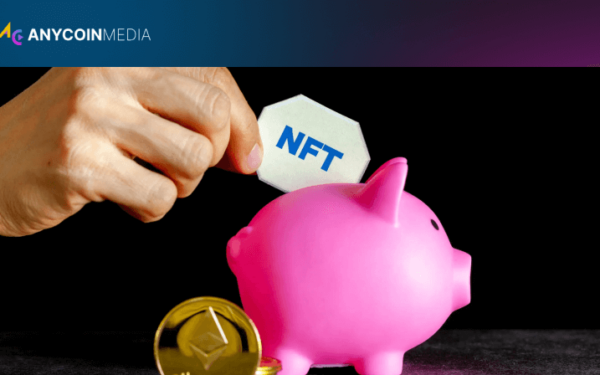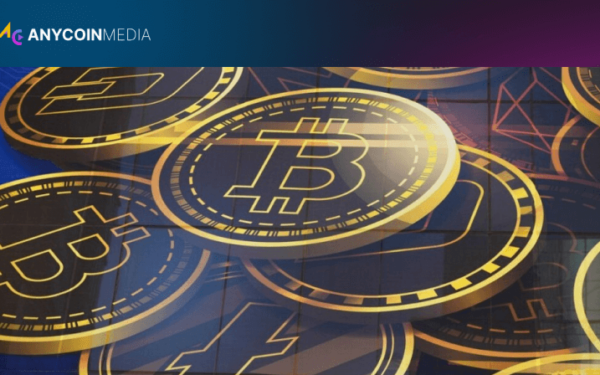Blockchain technology, heralded for its transparency and security, ironically harbors vulnerabilities that savvy operators can exploit. Among these vulnerabilities, front-running attacks stand out as a particularly insidious threat to the fairness and integrity of decentralized systems. These attacks, rooted in age-old stock market manipulation techniques, have found new life in the digital realm of cryptocurrencies and decentralized finance (DeFi).
Blockchain technology, heralded for its transparency and security, ironically harbors vulnerabilities that savvy operators can exploit. Among these vulnerabilities, front-running attacks stand out as a particularly insidious threat to the fairness and integrity of decentralized systems. A front-running attack occurs when an attacker exploits the period when a transaction is waiting in the mempool. These attacks, rooted in age-old stock market manipulation techniques, have found new life in the digital realm of cryptocurrencies and decentralized finance (DeFi).
In essence, front-running exploits advanced knowledge of pending transactions to gain an unfair advantage. In traditional finance, this might involve a broker executing trades for their benefit before fulfilling a large client order. In the blockchain world, front-running takes on a new dimension, leveraging the unique characteristics of distributed ledger technology.
On public blockchains like Ethereum, transactions are broadcast to a employ before being confirmed in a block. This interim state creates a window of opportunity for attackers. By monitoring the memory, front-runners can:
This process allows front-runners to capitalize on price movements or arbitrage opportunities before materializing for other users.
When a user initiates a transaction on a blockchain, it embarks on a journey through a multi-step process before being added to the blockchain. Initially, the transaction is broadcasted to the network, where it is verified by nodes. Once verified, it enters a temporary holding area known as the mempool. The mempool acts as a waiting room for unconfirmed transactions, where pending transactions wait to be picked up by miners or validators.
Miners or validators then select transactions from the mempool and group them into a block. The order in which transactions are added to the blockchain is typically determined by the transaction fees associated with each transaction. Users can set their own transaction fees, and those willing to pay higher fees can prioritize their transactions. This means that transactions with higher fees are more likely to be added to the blockchain sooner, as miners are incentivized to maximize their earnings by including higher-fee transactions in the blocks they mine.
This fee-based prioritization mechanism, while efficient, also creates opportunities for front-running attacks, where malicious actors exploit the system to gain an unfair advantage.
Front-running attacks in blockchain come in various forms, each exploiting different aspects of the system:
These attacks can significantly impact market participants by allowing certain individuals to exploit privileged information, leading to ethical concerns about fairness and the integrity of the trading environment.
In a displacement attack, the front-runner replaces the target transaction with their own. They achieve this by submitting a transaction with the same nonce but a higher gas price. Miners, incentivized to include higher-fee transactions, will prioritize the front-runner’s transaction.
Insertion attacks are more subtle. The attacker places their transaction immediately before the target transaction in the block, allowing them to act on information contained in the pending transaction without preventing its execution.
Suppression attacks aim to delay or prevent the execution of target transactions. Front-runners might flood the network with high-fee transactions to push other transactions back into the queue. This tactic can manipulate market conditions or prevent competitors from executing trades.
The consequences of front-running extend beyond individual losses, affecting the entire ecosystem:
A study by Flashbots, a research organization focused on mitigating negative externalities in blockchain, estimated that over $1 billion worth of Ether was extracted through front-running and other MEV (Miner Extractable Value) strategies in 2021 alone.
Front-running attacks exploit several inherent characteristics of blockchain networks:
Smart contracts can be exploited in front-running attacks, particularly through the use of Maximum Extractable Value (MEV) bots that capitalize on pending transactions within the mempool.
The public nature of blockchain transactions, while a feature for transparency, becomes a vulnerability in this context. The time delay between transaction broadcast and confirmation creates a window for exploitation. Gas price mechanisms, designed to prioritize transactions, inadvertently provide a lever for attackers to manipulate transaction order.
To illustrate the mechanics of a front-running attack, consider the following simplified scenario on a decentralized exchange (DEX):
This basic pattern can be adapted to various DeFi operations, including arbitrage, liquidations, and NFT minting.
Combating front-running requires a multi-faceted approach involving both technical solutions and protocol design considerations:
Commit-reveal schemes involve users submitting encrypted transaction details that are only revealed after a set period. This prevents front-runners from accessing transaction information prematurely. Submarine sends, developed by Cornell researchers, use a two-step process to obscure transaction details until execution.
Flashbots MEV-Geth is a modified Ethereum client that allows miners to accept transaction bundles through a private channel, bypassing the public. This approach aims to democratize MEV extraction and reduce negative externalities.
To combat front-running attacks, platforms can implement a variety of measures designed to protect users and maintain the integrity of the system. One effective approach is the commit-reveal scheme. In this method, users submit their transactions in two stages. First, they commit to the transaction by submitting a hash of the transaction details. Later, they reveal the actual transaction details. This two-step process makes it challenging for front-runners to identify potentially profitable transactions in advance.
Another strategy is to use batch transactions, where multiple transactions are bundled together and processed as a single unit. This reduces the incentive for front-runners to manipulate individual transactions, as the bundled transactions obscure the details of any single transaction.
Platforms can also implement rate limiting, which restricts the frequency and number of transactions that can be submitted from a single address. This measure helps to prevent front-runners from flooding the network with high-fee transactions to manipulate the transaction queue.
Additionally, layer 2 scaling solutions, such as rollups or state channels, can be employed to reduce the risk of front-running. These solutions process transactions off the main blockchain, thereby reducing congestion and the window of opportunity for front-runners to exploit pending transactions.
Users can also take proactive steps to protect themselves from front-running attacks. One effective measure is to use privacy platforms or tools that offer confidential transactions. These platforms utilize advanced cryptography to obscure transaction details, making it difficult for front-runners to identify potentially profitable transactions.
Another approach is to use gas price oracles, which help users set their gas prices dynamically based on current network conditions. By adjusting gas prices in real-time, users can reduce the likelihood of their transactions being targeted by front-runners. Gas price aggregators can also be useful, as they provide users with a fair gas price by aggregating data from multiple sources.
Implementing a gas price slider is another practical measure. This tool allows users to adjust their gas prices in real-time, giving them greater control over the priority of their transactions. Additionally, users can avoid peak transaction times, when the network is most congested, to reduce the chances of becoming a victim of front-running.
Several high-profile incidents have highlighted the prevalence and impact of front-running in the blockchain space:
Bancor, a decentralized exchange protocol, was the victim of a sophisticated front-running attack that exploited its price oracle. The attacker manipulated token prices through rapid trades, extracting approximately $460,000 in profit.
In what became known as the «Salmonella» attack, a front-runner exploited SushiSwap’s MISO platform during an NFT auction. By manipulating transaction ordering, the attacker secured rare NFTs as below-market prices, profiting over $3 million.
The ENS domain registration process became a target for front-runners, who would snipe valuable domain names as soon as they became available. This led to the implementation of a commit-reveal process for new registrations.
The prevalence of front-running in blockchain has sparked ethical debates within the community. Some argue it’s a natural consequence of free markets, akin to high-frequency trading in traditional finance. Others view it as theft, undermining the principles of fairness and decentralization that blockchain technology aspires to embody.
This debate extends to the role of miners and validators, who have the power to order transactions within blocks. Should they be allowed to extract value through transaction ordering, or is this a breach of their role as neutral network operators?
As blockchain technology and DeFi continue to grow, regulatory bodies are noticing front-running and other forms of market manipulation. In traditional finance, front-running is illegal in many jurisdictions. However, the decentralized and often pseudonymous nature of blockchain transactions presents challenges for enforcement.
Potential regulatory approaches include:
The challenge lies in balancing the need for investor protection with the innovative potential of decentralized systems.
As the blockchain ecosystem evolves, so will the strategies for preventing and mitigating front-running attacks. Emerging technologies and approaches show promise:
The arms race between front-runners and protocol developers continues, driving blockchain security and design innovation.
In conclusion, front-running attacks represent a significant challenge to the fairness and efficiency of blockchain-based systems. Understanding the mechanics, impacts, and prevention strategies is crucial for developers, users, and regulators in the cryptocurrency space. As the technology matures, a combination of technical solutions, protocol designs, and regulatory frameworks will likely emerge to address this issue, ultimately strengthening the resilience and trustworthiness of decentralized systems.
Front-running attacks pose a significant threat to the integrity and fairness of blockchain-based systems. These attacks can lead to financial losses for users and undermine trust in decentralized platforms. To mitigate the risk of front-running attacks, platforms can implement various measures, such as commit-reveal schemes, batch transactions, rate limiting, and layer 2 scaling solutions. Users can also take personal measures, such as using privacy platforms, gas price oracles, gas price aggregators, and gas price sliders.
By understanding how transactions are added to the blockchain and taking proactive steps to protect against front-running, both platforms and users can work together to maintain the integrity and trustworthiness of decentralized systems.





